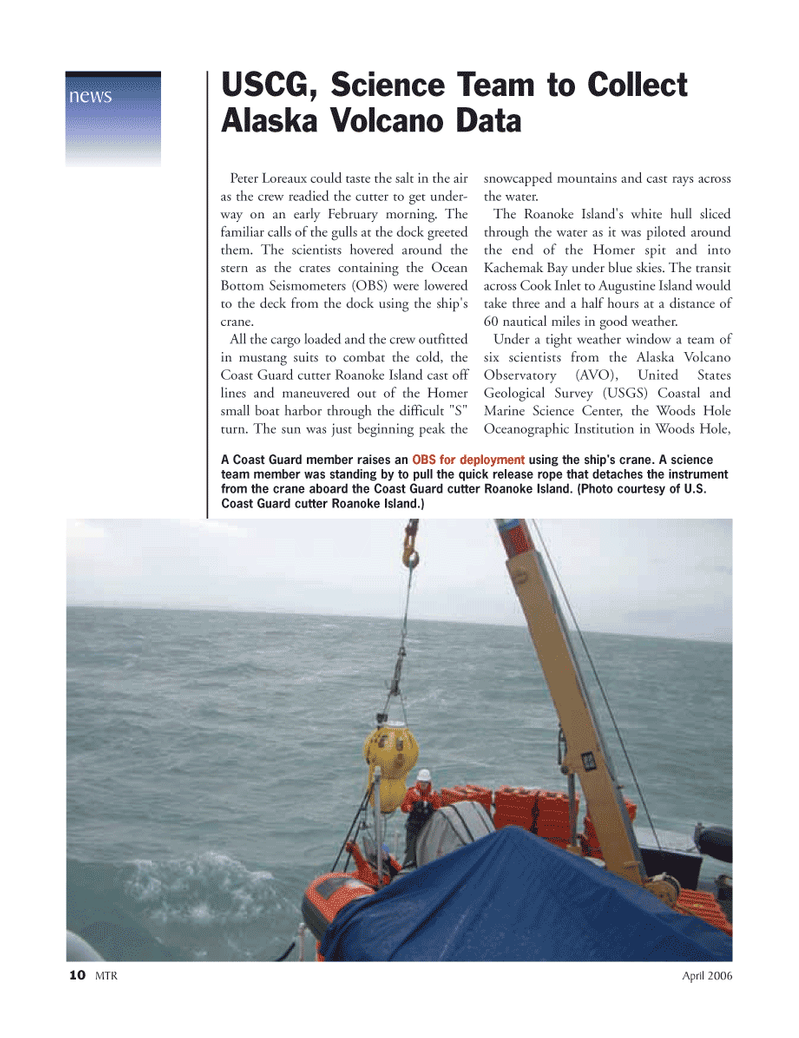
Page 10: of Marine Technology Magazine (April 2006)
The Offshore Technology Edition
Read this page in Pdf, Flash or Html5 edition of April 2006 Marine Technology Magazine
10 MTR April 2006
Peter Loreaux could taste the salt in the air as the crew readied the cutter to get under- way on an early February morning. The familiar calls of the gulls at the dock greeted them. The scientists hovered around the stern as the crates containing the Ocean
Bottom Seismometers (OBS) were lowered to the deck from the dock using the ship's crane.
All the cargo loaded and the crew outfitted in mustang suits to combat the cold, the
Coast Guard cutter Roanoke Island cast off lines and maneuvered out of the Homer small boat harbor through the difficult "S" turn. The sun was just beginning peak the snowcapped mountains and cast rays across the water.
The Roanoke Island's white hull sliced through the water as it was piloted around the end of the Homer spit and into
Kachemak Bay under blue skies. The transit across Cook Inlet to Augustine Island would take three and a half hours at a distance of 60 nautical miles in good weather.
Under a tight weather window a team of six scientists from the Alaska Volcano
Observatory (AVO), United States
Geological Survey (USGS) Coastal and
Marine Science Center, the Woods Hole
Oceanographic Institution in Woods Hole, news
USCG, Science Team to Collect
Alaska Volcano Data
A Coast Guard member raises an OBS for deployment using the ship's crane. A science team member was standing by to pull the quick release rope that detaches the instrument from the crane aboard the Coast Guard cutter Roanoke Island. (Photo courtesy of U.S.
Coast Guard cutter Roanoke Island.)
MTR#3 (1-16).qxd 4/7/2006 11:15 AM Page 12

 9
9

 11
11
